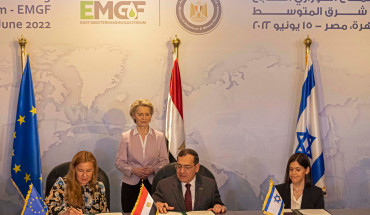Iranian society has changed dramatically over the past 30 years, and bears little resemblance either to the expectations of or the picture painted by the leadership of the Islamic Republic. Indeed, as much as the ruling clerics like to project self-confidence and the ability to predict the future, they could not have envisaged a society with these characteristics. While many of these surprising developments have occurred because of the policies of the Islamic Republic, others have occurred despite or regardless of them. If our picture of Iran prior to 1979 was so positive that we could not imagine anything negative happening inside the country, our picture of Iran today is so negative that we cannot imagine anything positive taking place. Yet, as this essay shows, some government policies have been pragmatic and beneficial to society.
The “demographic gift” of the post-revolutionary period has resulted in a doubling of the population to 71 million, and more specifically a burgeoning of the youth population. Two out of three Iranians are under the age of 30. As reflected by Iran’s 85% literacy rate (among the highest of Muslim countries), young Iranians are much better educated than previous generations. However, fewer than one in three can remember the revolution, and the young suffer disproportionately from the regime’s failures. In 2007, by the government’s own reckoning, nearly every other Iranian between the ages of 25 and 29 was unemployed. A lack of jobs is no doubt one reason for the prevalence of crime and delinquency in the country.
The demographic surge has been accompanied by rapid urbanization; seven out of ten Iranians now live in cities. Large cities are confronted with serious issues regarding municipal management of basic services, poor planning for housing construction, and serious environmental risks. The population of Tehran has increased to 14 million (from six million in 1980). The World Bank, which in 2003 lent Tehran $20 million to clean up the air, said the pollution in Iran’s major cities exceeded World Health Organization standards by 40% to 340%.[1]
Iranian society is a nominally austere society, much of whose actual behavior attests to the fact that the regime’s draconian policies of imposing Islamic restrictions on everything, ranging from the country’s penal code to university admission policies, have backfired. According to one source, Iranian clergy have complained that more than 70% of the population does not perform their daily prayers and that less than 2% attend Friday mosques.[2]The rise of lay intellectuals, such as Abdolkarim Soroush, is due to the fact that their argument emphasizes the separation of religion from politics in Iran, implicitly hinting at the problems caused by clerical involvement in politics.[3]
Iranian society has become globalized. A recent blog census found that there are more than 700,000 weblogs written in Persian, compared with about 50 in neighboring Iraq. Iranian bloggers include members of Hizbullah, teenagers in Tehran, retirees in Los Angeles, religious students in Qom, dissident journalists who left Iran a few years ago, exiles who left 30 years ago, current members of the Majlis (parliament), reformist politicians, a multitude of poets, and — quite famously — the President of Iran, among many others. This has allowed the Internet savvy Iranian youth to have access to a wide range of perspectives that criticize the Islamic Republic’s policy positions.[4]
The number of women graduating from Iran’s universities is overtaking the number of men, promising a change in the job market and, with it, profound social change. Well over half of university students in Iran are now women. In the applied Physics Department of Azad University, 70% of the graduates are women — a statistic which would make many universities in the West proud. Ten years ago, only 12.5% of Iranian medical students were women, and the government responded by setting a goal that half of new students would be female. Today, one-third of the 22,326 students in Iran’s 38 medical schools are women. But the regime’s policy of depriving female doctors of training in male hospital wards leads to tensions. In 2001, students at the Fatimieh Female Medical School in Qom, one of Iran’s most religious cities, held a sit-in protest in Tehran.
Striking a balance between the republican and Islamic components of governance has become exceedingly complicated, if not confounding. Iran has a confusing legal structure that is based on parliamentary legislations, codification of Islamic law into an Islamic penal code, religious rulings of mujtahids (fatwas), opinions of the late Ayatollah Ruhollah Khomeini (known as the faqih or jurisconsult), and rulings by the current Supreme Leader, ‘Ali Khamene’i (vali amr moslemin). Although republicanism is expressed in elections for a President, parliamentary deputies, and city councils, powerful unelected clerical bodies, such as the Council of Guardians, use their authority to veto any candidate that they view as “unacceptable.” Moreover, according to Article 167 of the Iranian Constitution, “whenever there is no law or the law is ambiguous, judges must refer to authoritative sources and authentic fatwas.” This has led to thousands of contradictory fatwas, which makes it impossible for judges to give uniform rulings on similar violations.
The publication of books by non-clerics directly question and challenge the clerics on their interpretation of Islamic law. To cite one example, Emad Baghi’s book, Right to Life, argues for the abolition and suspension of the death penalty in Iran and draws on Qur’anic verses to argue that, “Crime, felony, and executions are the results of and contributors to a culture of violence.”
As much as the ruling élite in the Islamic Republic has had a difficult time negotiating the boundaries of Islamic principles with its Republican constitutionalism, they have not been as rigid in finding a positive interpretation of Shari‘a when it comes to the role of science, particularly regarding important scientific discoveries. Since the late 1990s, Iranian scientists have engaged the religious hierarchy in a lively debate on genetic engineering, biomedical sciences, and ethical issues. Iran is now investing heavily in science, after decades of neglect.[5]Even Supreme Leader Ayatollah ‘Ali Khamene’i has issued a fatwa calling on researchers to secure Iran’s position as the “leader in science” in the Middle East over the next 20 years.[6]They have effectively applied the principle of maslahat (expediency) as a way of justifying important scientific discoveries since there are no texts in the Qur’an or Sunna that expressly prohibit such innovations. Iranians have been quite open in their judgments about scientific developments in genetic engineering, artificial insemination, in vitro fertilization (IVF), and transplants. This is in contrast to the controversy that has been raging for decades about kidney transplants in Egypt.[7]
In conclusion, Iranians from all walks of life crave stability on their borders and a government that can deliver on its promises and plans. After living in a state of semi-crisis for 30 years, Iranians have learned their lessons about revolution, the consequences of mixing religion with politics, and the costs of living in a country that is under sanctions and pressures. With 30% inflation, a 35% increase in food prices in 2008, a $50 billion deficit, and an unemployment rate of 16% (the highest level since the 1960s), Iran’s rulers will have a hard time convincing the population that they are better off in 2009.
[1]. The Los Angeles Times, October 21, 2007.
[2]. The Economist, January 16, 2003.
[3]. Afshin Matin-asgari, “Abdolkarim Sorush and the Secularization of Islamic Thought in Iran,” Iranian Studies, Vol. 30, Nos. 1-2 (Winter/Spring 1997).
[4]. John Kelly and Bruce Etling, Mapping Iran’s Online Public: Politics and Culture in the Persian Blogosphere, The Berkman Center for Internet & Society, Harvard Law School, April 2008.
[5]. Science, September 16, 2005, p. 1802.
[6]. Science, December 17, 2008, p. 292.
[7]. The Egyptian Parliament passed legislation effectively banning any kidney transplants between Muslims and Christians. In August 2008, the Egyptian Medical Association denied that a bill would discriminate between Christians and Muslims by prohibiting organ transplants between members of the two faiths. The Association supports the controversial measure. “This is all to protect poor Muslims from rich Christians who buy their organs and vice versa,” explained Hamdi al-Sayyid, the Director of the Medical Association. Under the bill, physicians who violate the proposed law would face retribution. See Martin Barillas, “Egypt Seeks to Ban Christian-Muslim Organ Transplants,” The Cutting Edge, August 25, 2008.
The Middle East Institute (MEI) is an independent, non-partisan, non-for-profit, educational organization. It does not engage in advocacy and its scholars’ opinions are their own. MEI welcomes financial donations, but retains sole editorial control over its work and its publications reflect only the authors’ views. For a listing of MEI donors, please click here.













